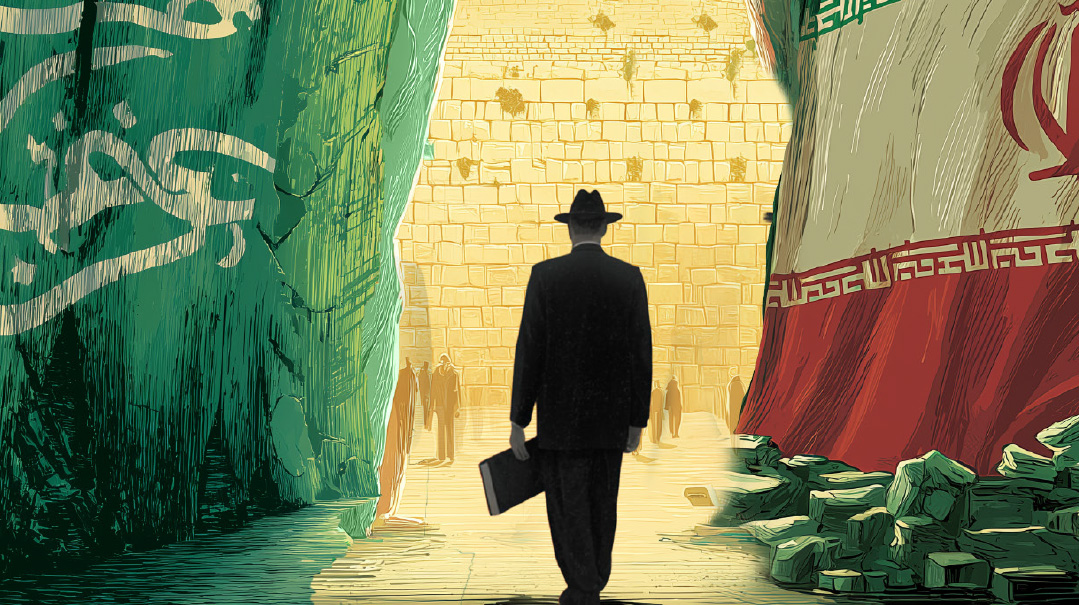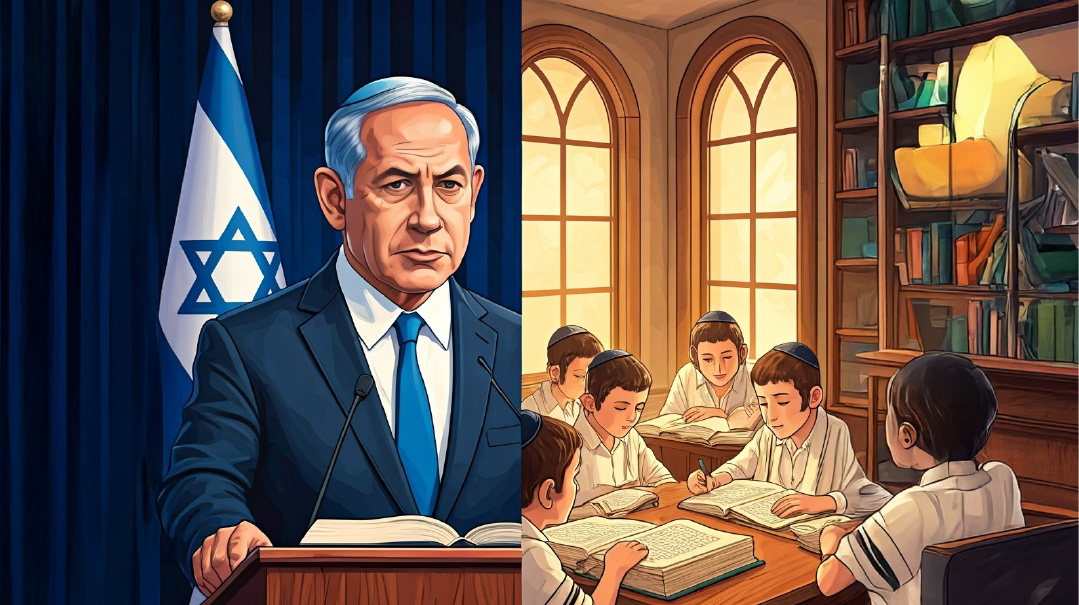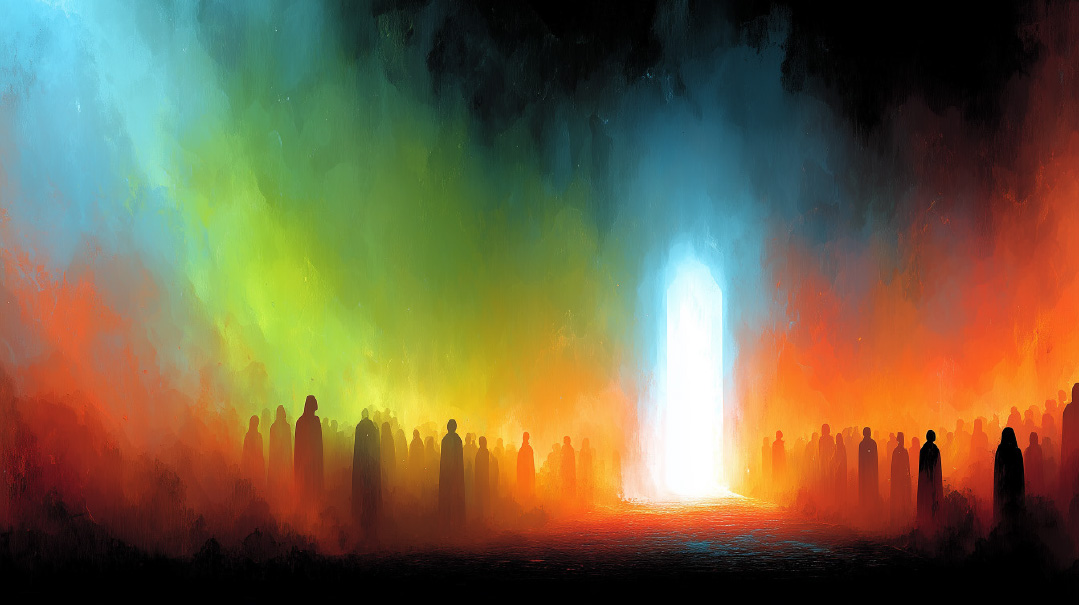A Meeting with Hashem

The seeming dichotomy of the day is not really a duality at all; the two aspects represent flip sides of the same coin
AN experience that took place over 30 years ago haunts me every year when we enter the period of bein hameitzarim, more commonly known as The Three Weeks.
There was a weekly minyan held in my neighborhood’s Bais Yaakov school building, specifically for Russian Jews, led by Rabbi Hillel Belsky shlita. Many of the attendees were sadly ignorant of their precious heritage but held on to their Jewish identity with great pride. They even protested that the divrei Torah shared before Mussaf should not be translated into Russian out of concern for chillul beis knesses.
One summer Shabbos afternoon, we hosted one of the couples that frequently attended the minyan, and the conversation turned to Tishah B’Av. As I prepared to explain its significance, one of the guests told me that he had indeed heard of it. He said that in Russia, they had visited the cemetery every year on that day, although he didn’t understand why.
I was moved. The Communists had almost succeeded in eradicating any vestige of religion from our people, but thankfully not completely. Even in the wasteland of the Soviet Union, Yidden knew about Tishah B’Av and felt the need to acknowledge it.
If even Jews who had been estranged from Yiddishkeit for generations felt a need to tune into the somber tone of the day, we, who have learned its tragic history, surely should be marking it appropriately. What is our mandate on Tishah B’Av aside from fasting, reciting Kinnos, and catching up on laundry once it concludes?
There is a fascinating gemara in Taanis (29a) that discusses the source for our tradition that Churban Bayis Sheini happened on Tishah B’Av, like Churban Bayis Rishon. Remarkably, there is no clear indication when this second Churban actually took place. And even more surprising is the Gemara’s answer: “Megalgelin zechus al yedei zakai v’chov al yedei chayav.” Since the 9th of Av is an inauspicious date, and we know unequivocally that Churban Bayis Rishon took place then, we can be sure that the second Churban took place then as well.
At face value, this gemara is difficult to understand. Is that it? Is our whole mesorah regarding the date of Churban Bayis Sheini based on an educated guess drawn on some axiom that bad things happen on bad days? Granted these are Chazal’s words, but this idea still goes over with difficulty. How do we relate to it, and what are we intended to learn from it?
Rav Yerucham Levovitz ztz”l, the mashgiach of the Mirrer Yeshivah, quotes a midrash about the significance of time and the way we should relate to it, which sheds light on this question. The midrash teaches us that there was a specific time for Adam’s creation, a specific time for him to leave Gan Eden, and a special time for Matan Torah. And this list continues, recording many pivotal events in our history that were locked into an exact time.
Contrary to what most people think — i.e., that an event occurs and coincidentally happens at a certain time — Rav Yerucham teaches us that it’s really the other way around. The entire ability for anything to take place hinges completely on the influence of the time; we need to just capture the moment and apply ourselves to the power and segulah of that time. Matan Torah had to take place when it did, as was the case with Yetzias Mitzrayim. Had we not done what we chose to do in order to allow it to happen then, only Hashem could know what would have had to transpire to enable the event to ever take place, if even possible.
An appreciation of this concept allows us to understand how Chazal Hakedoshim were able to truly feel the spiritual energy that different times hold, in a whole different realm than we are capable of. Case in point: We sing every week in zemiros how Shabbos is mei’ein Olam Haba. But while we only sing it, great people who are tuned in to kedushah can feel it.
This holds true for every zeman. Those who are spiritually attuned can actually sense the energy inherent in different zemanim.
Chazal, with their acutely sensitive spiritual antennae, experienced Tishah B’Av on a visceral level. As such, they sensed this was the day of Churban Bayis Sheini. It could only be that day and no other.
Far from an educated guess, for them it was as real as our consciousness of the mundane things we relate to in the physical world. Ruchniyus was their world, and more real to them than anything here is to us.
And even on our level, the integral power of the day means Tishah B’Av is ingrained in our neshamos, even for those who sadly don’t actually know anything about it.
Rav Avrohom Yitzchak Bloch, rosh yeshivah of Telshe in Lithuania, interpreted the word “moed” in Megillas Eichah as a reference to Tishah B’Av, despite its usual connotation as a time for celebration. While the idea of a Yom Tov strikes a note of dissonance in the somber context of churban, we are taught that it can be understood as a time of meeting with Hashem. As Rav Mordechai Gifter ztz”l would say, “Mir treft mit ihm Baruch Hu — we are meeting with Him.” Whether the backdrop seems good or bad, His presence is obvious, and the feeling of meeting Him is inescapable.
This gives us a clearer insight into the kinnah “Eish Tukad B’kirbi” in which the paytan contrasts our joy upon our Exodus from Egypt with our misery when leaving Yerushalayim. They were both occasions of moed — clear meetings with Hashem — albeit consisting of completely contrasting, opposite emotions.
The Three Weeks preceding Tishah B’Av certainly have an aspect of churban inherent within them, and we know the halachah mandates various restrictions due to the “ketev meriri” (a dangerous ruach, or spirit, that Chazal have taught us is particularly harmful during this time of year). These halachos and minhagim are tools to bring the reality of churban closer to home, and when viewed as such, they raise the question of why anyone would search for leniencies and squander the opportunity to engage in what earlier generations felt was a time to connect with Hashem.
Early on in my rabbinical career a woman in the year of aveilus asked me a sh’eilah in a gray area of halachah, and I felt it appropriate to be machmir. Sometime later I had the opportunity to review the question with a prominent posek, and he told me he thought I had ruled too stringently. When I called the woman to notify her of my new position and apologize, her reaction was precious. “If I held back from doing something out of respect for my mother’s memory, let it be another zechus,” she said simply.
It’s sadly ironic how aveilim, Rachmana litzlan, have no problem keeping stringencies all twelve months of aveilus, yet some of us can’t bear being without a capella music or meat at a siyum for even nine days. It provides food for thought about how much we feel connected to the Churban, and what we are willing to sacrifice for the cause.
We are taught that the word “shanah — year” can also be translated as “repeat.” This is because each year there is a repetition of the spiritual energy that charges each particular date. Our ability to tap into these energies depends on our personal conduct. In a public lecture, Rav Yoshe Ber Soloveitchik of Boston said that in the house of his father, Rav Moshe, the atmosphere was completely different at this time of year. You could cut it with a knife, it was so mamushisdig — it was so real.
I still have vivid memories of my mother’s “hilchos Nine Days” growing up as a child. There was no television whatsoever, and no ball games on the radio on Tishah B’Av. It may not sound like much today, but back then in the ’60s, it was a big deal.
I once went to a ballgame on Shivah Asar B’Tammuz at Fenway Park, before I was even a bar mitzvah, and my mother’s words of deep disappointment still ring in my ears every single year. “I can’t believe I raised a child tzum geien tzu dem (to go to a) ballgame Shivah Asar B’Tammuz.”
I remember teaching a 12-year-old about how in days gone by, the Megillah could be read anywhere between the 11th and 15th of Adar, to accommodate those who lived far from where other Jews lived. He couldn’t understand why we can’t read it beyond those dates as well.
In an attempt to speak his language, I offered a mashal: Let’s say your favorite football team was playing from 12:00 to 3:00. Could you put on the television at 4:00 and expect to watch the game?
L’havdil, everything has its time, and once that time has passed, we can’t simply pull it out of a hat anymore and recapture the precious moments.
Perhaps we can’t feel the Churban the way Chazal did, but we can certainly honor that ideal and strive to attain something by doing the best we can. The culture in our homes and our lives needs to reflect the loss of our Beis Hamikdash, both for ourselves and our children. We are not obligated to make up new restrictions or chumros that the world has never seen. But we certainly do not want to disregard the time-honored ruach that we saw and felt, and be mechanech our children in kind.
But even the moed of Tishah B’Av itself is not reserved for calamity exclusively. Rav Yosef Zvi Dushinsky ztz”l (as quoted in Talelei Oros) references a Zohar that the fight between Yaakov Avinu and the Sar shel Eisav took place on Tishah B’Av. This struggle portends our ultimate victory over Eisav.
In an eerily powerful teaching, Chazal tell us that Mashiach is destined to be born on Tishah B’Av as well, which is a source for various customs to reduce our aveilus after chatzos as an expression of our anticipation of his arrival.
Hashem’s closeness to us was apparent even on the day of the destruction of the Beis Hamikdash. Chazal teach us that the Keruvim in the Beis Hamikdash represented the relationship between Klal Yisrael and Hashem, and that they faced away from each other when we did not do the will of Hashem.
Yet while the Beis Hamikdash burned, the Keruvim embraced each other. We were meeting with Hashem.
The seeming dichotomy of the day is not really a duality at all; the two aspects represent flip sides of the same coin. The ultimate moed, Mashiach’s arrival, is an outgrowth of the face-to-face moed of churban. The embrace of the Keruvim even as the fires of destruction raged was an open demonstration of the intensity of this bond.
Rav Yaakov Emden wrote in Siddur Beis Yaakov that we remain in galus simply because of our disregard for mourning the Beis Hamikdash during this time of the year, not to mention the rest of the year. “And even if this were the only sin we were guilty of, it would be worthy of prolonging galus.”
We have been mired in galus long enough. Let us following Chazal’s directions pertaining to our conduct during these three weeks, which will allow us to connect with the awesome powers inherent in this time.
And may we soon see the fulfillment of the words of the Navi Zechariah that “the fasts of the fourth, fifth, and seventh will [eventually] be for happiness and moadim tovim,” good and happy meetings with Hashem.
(Originally featured in Mishpacha, Issue 967)
Oops! We could not locate your form.






